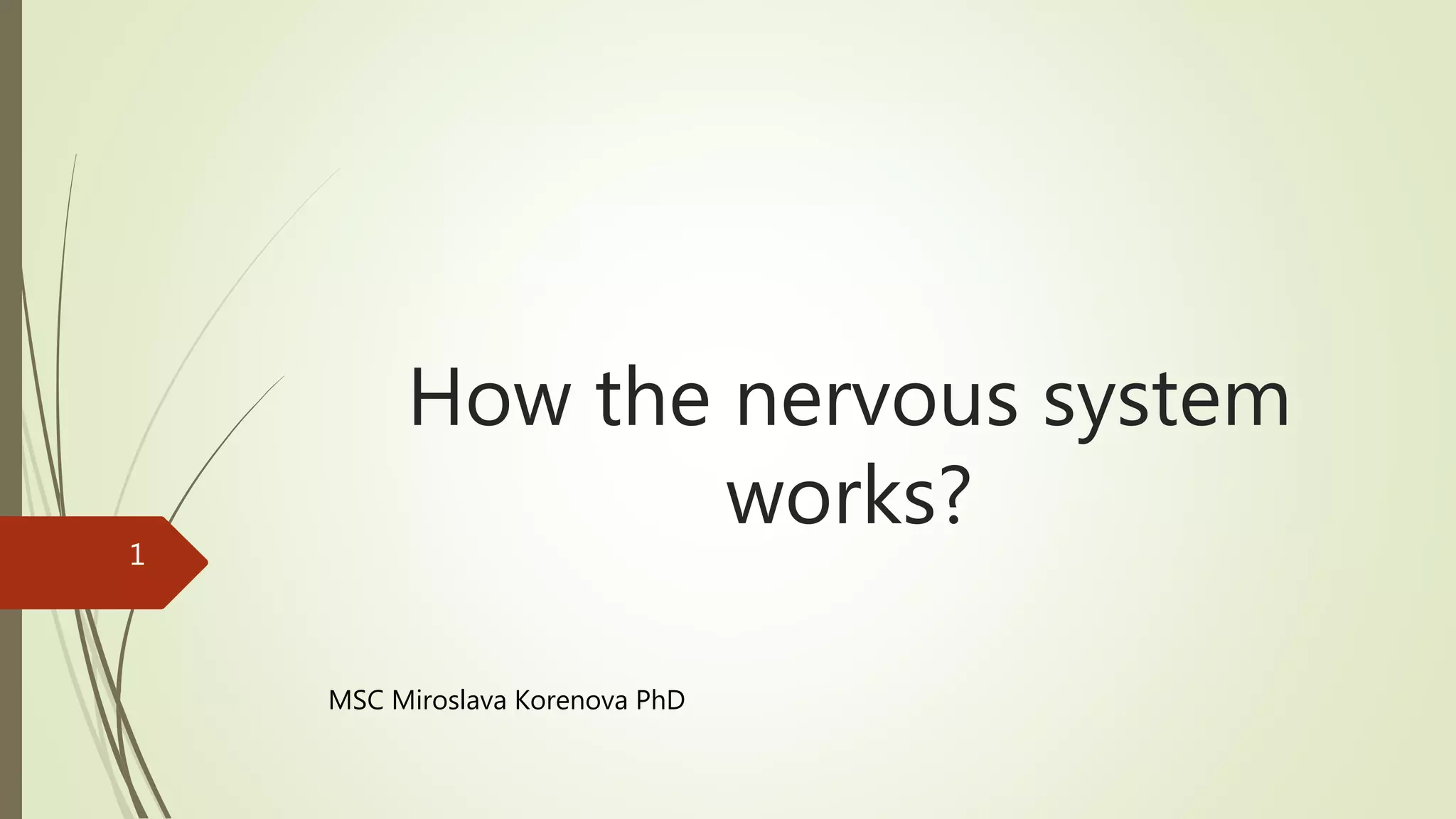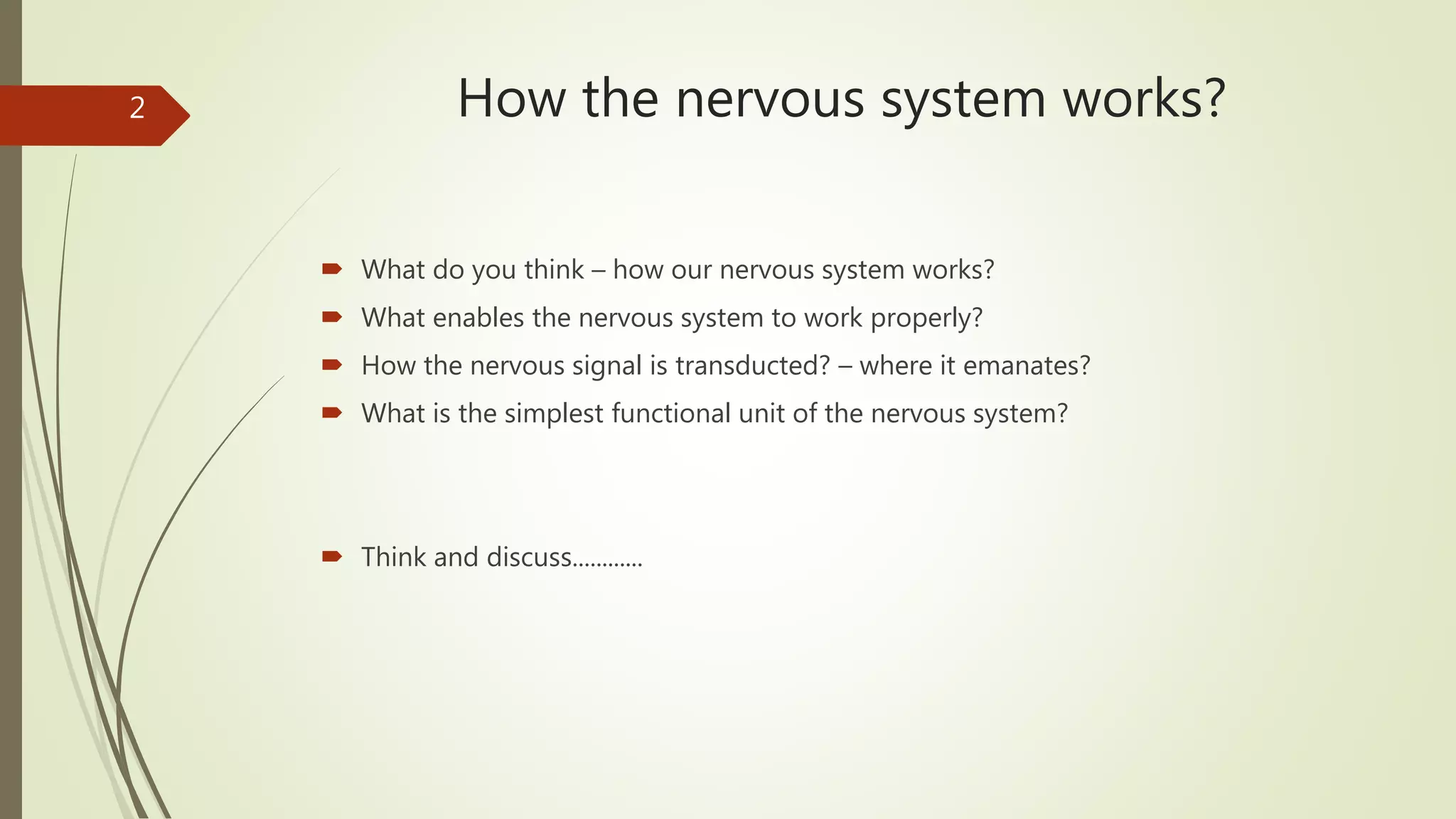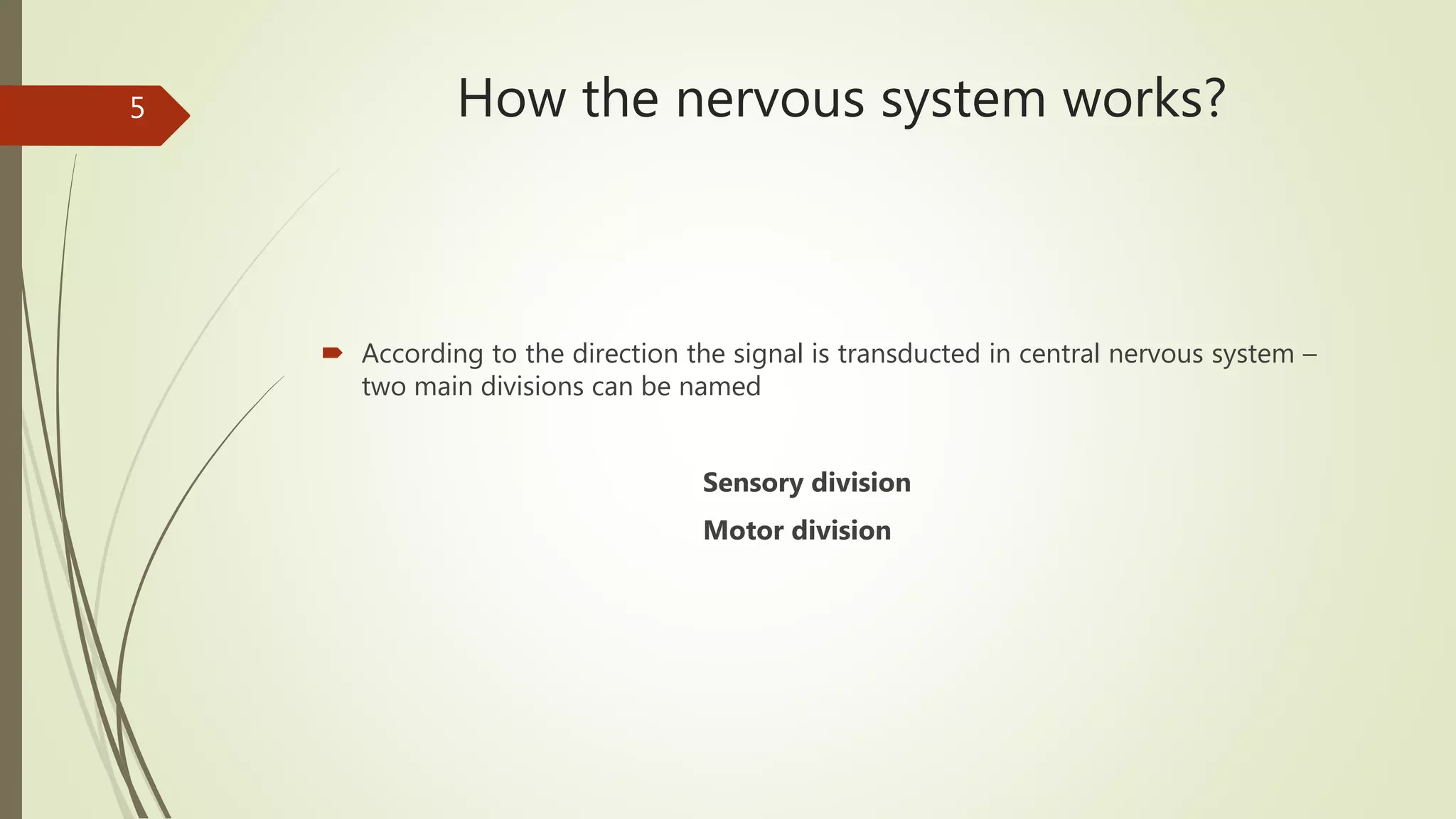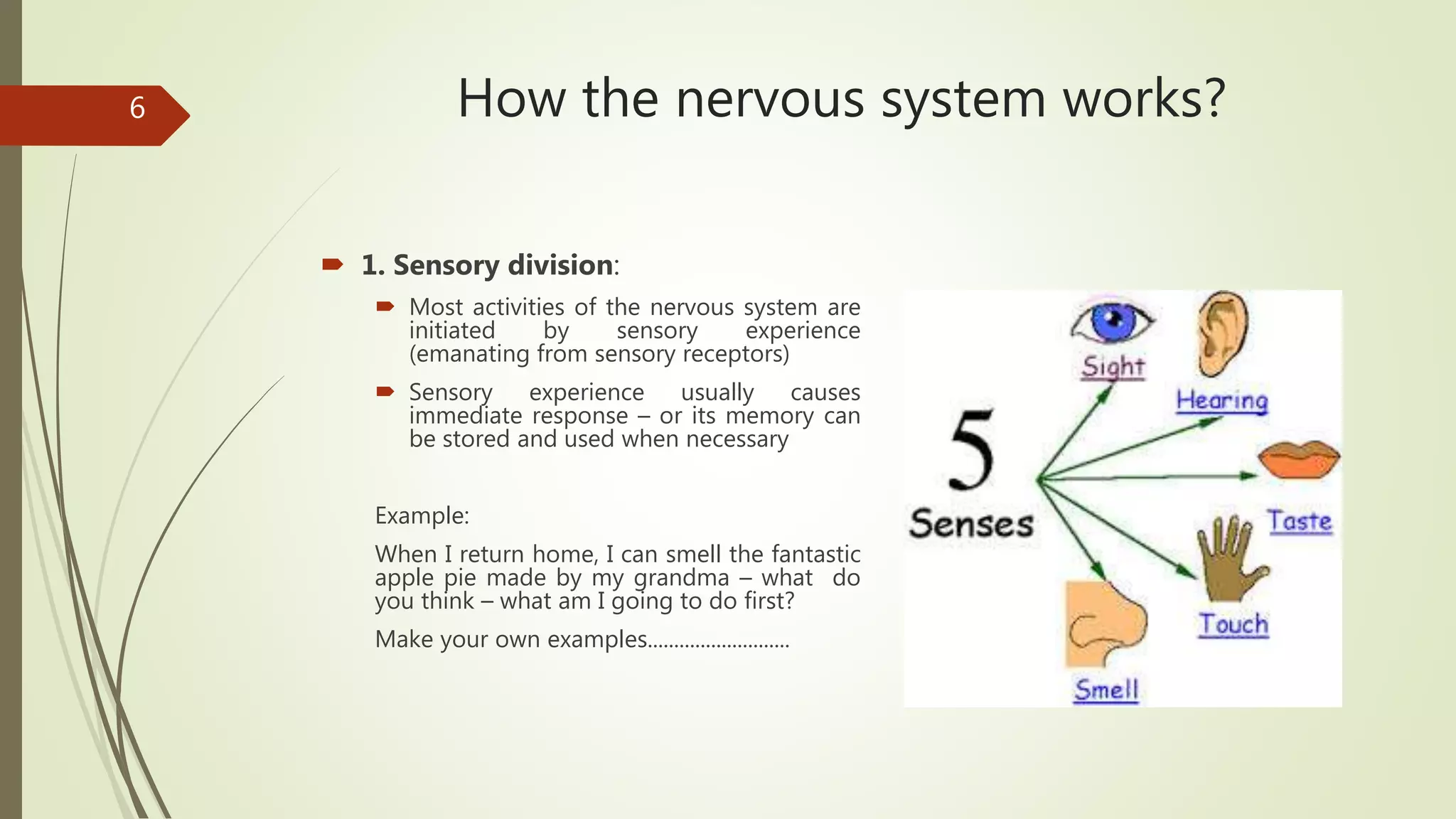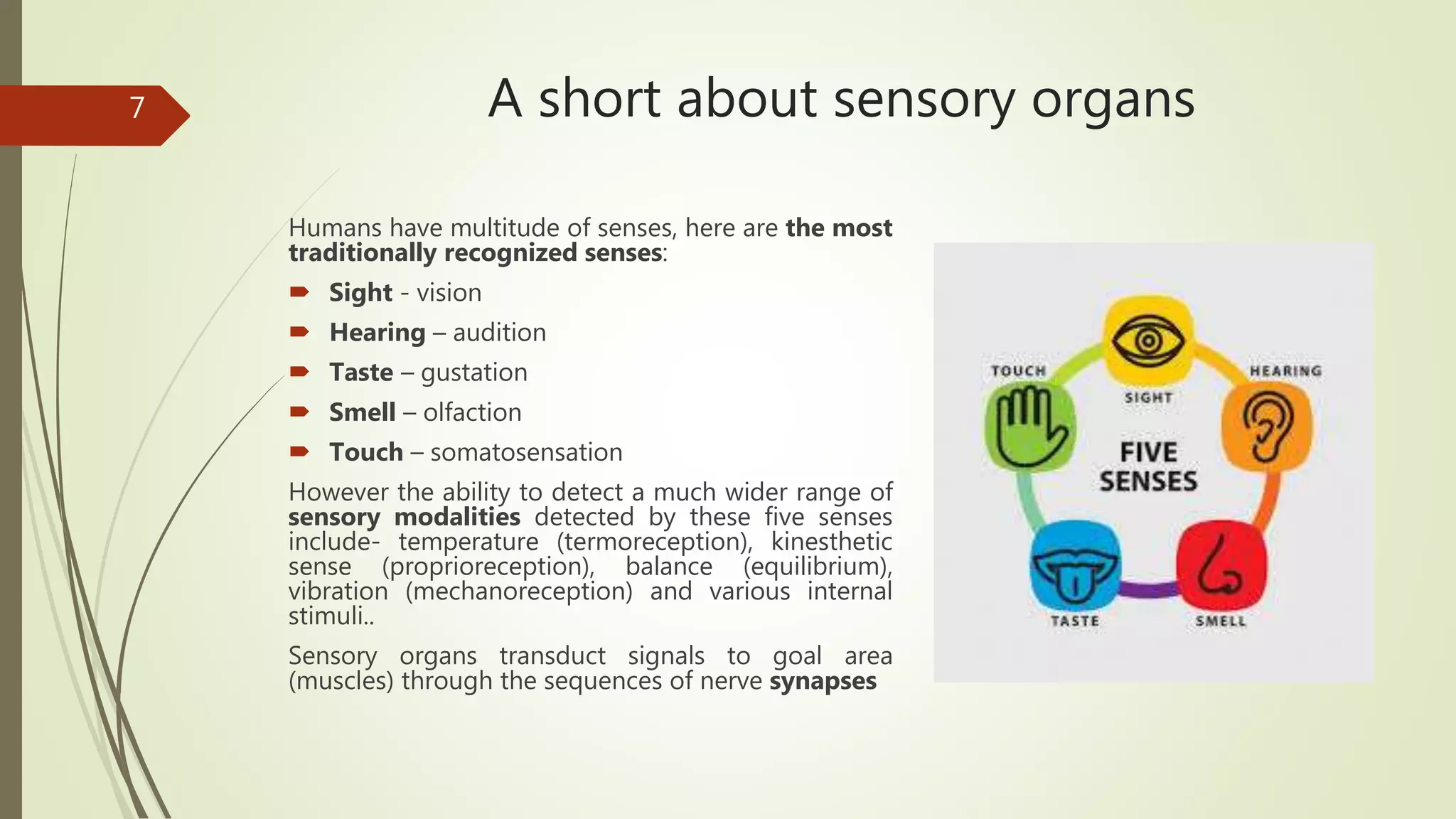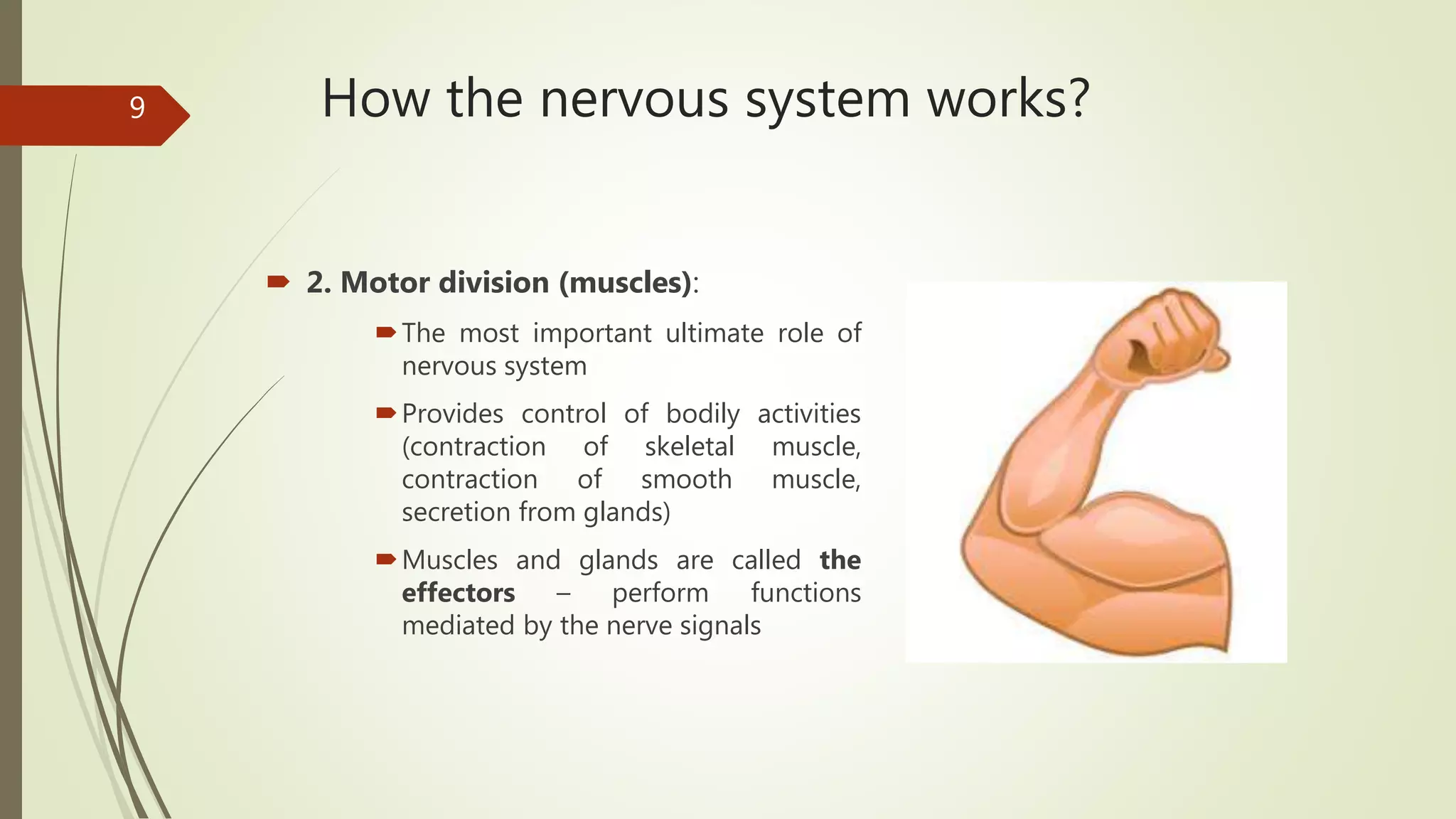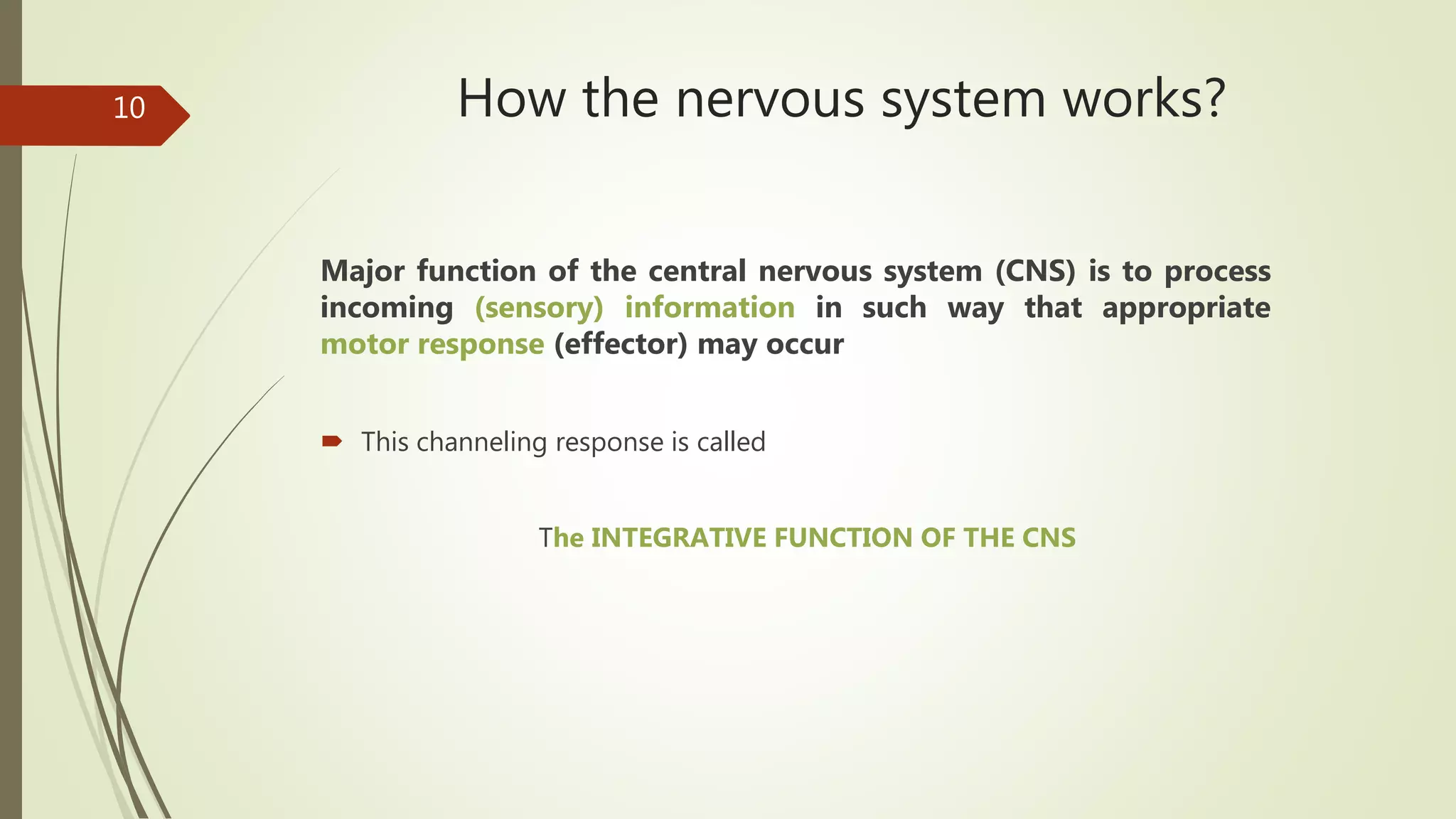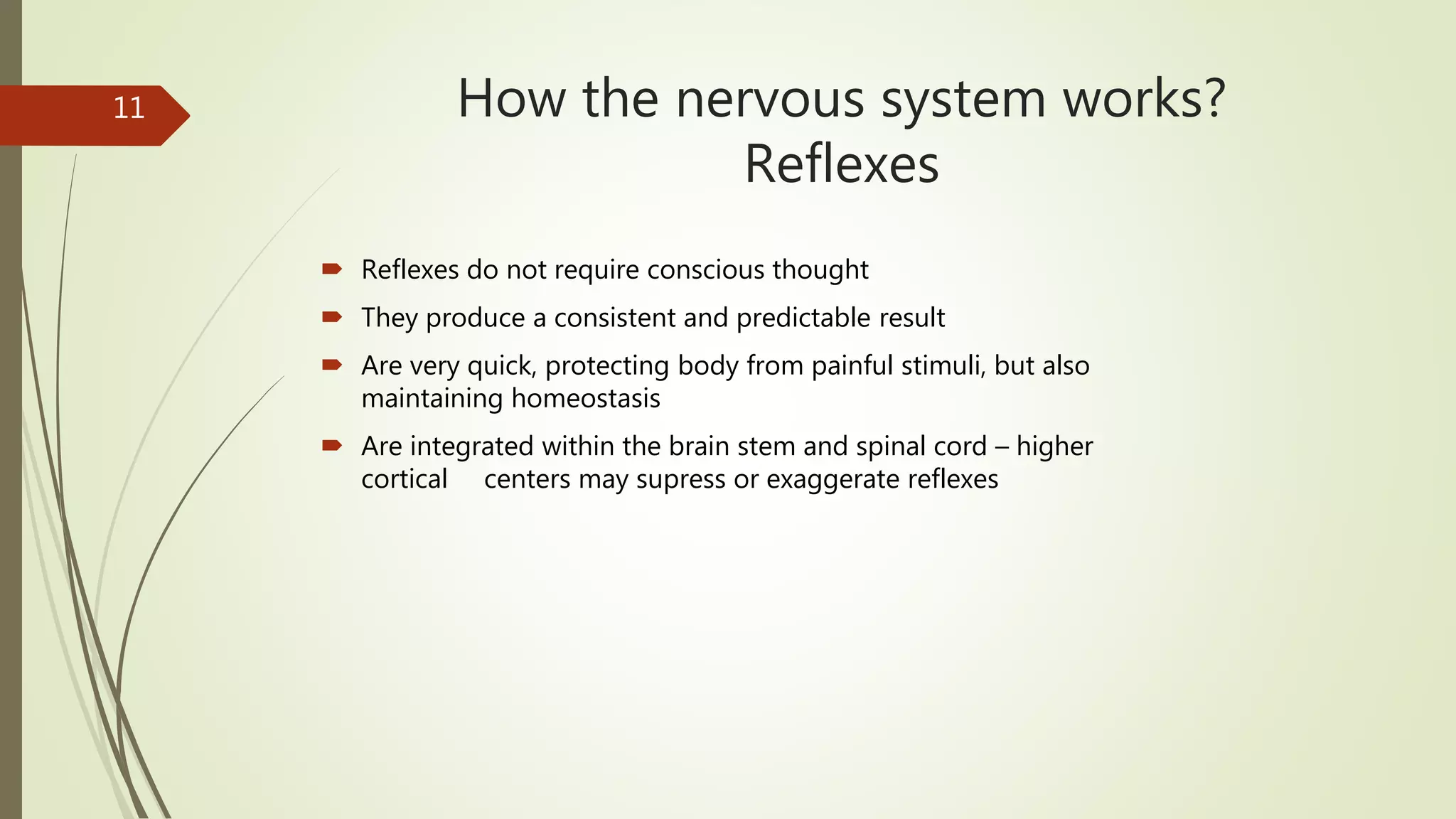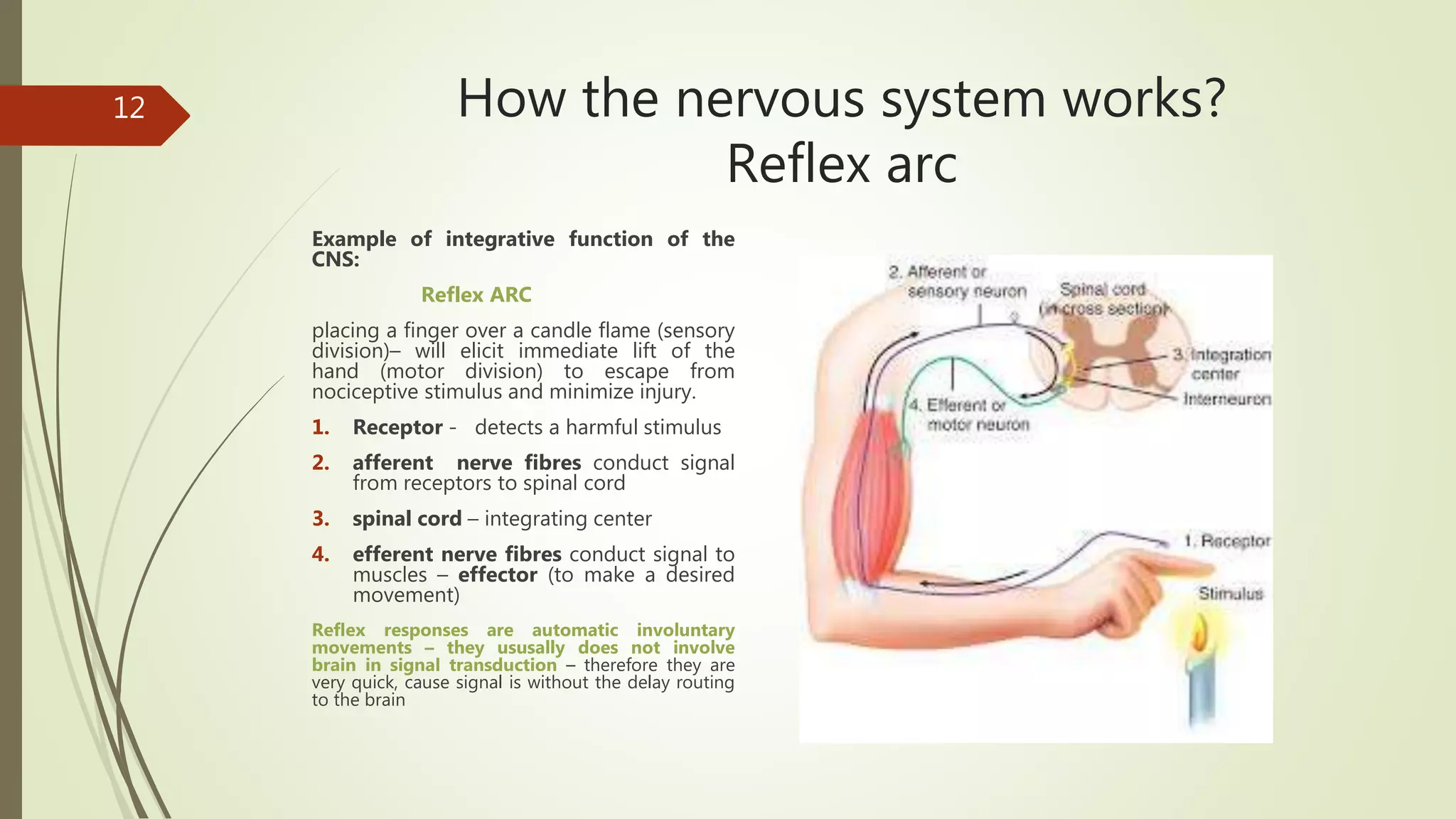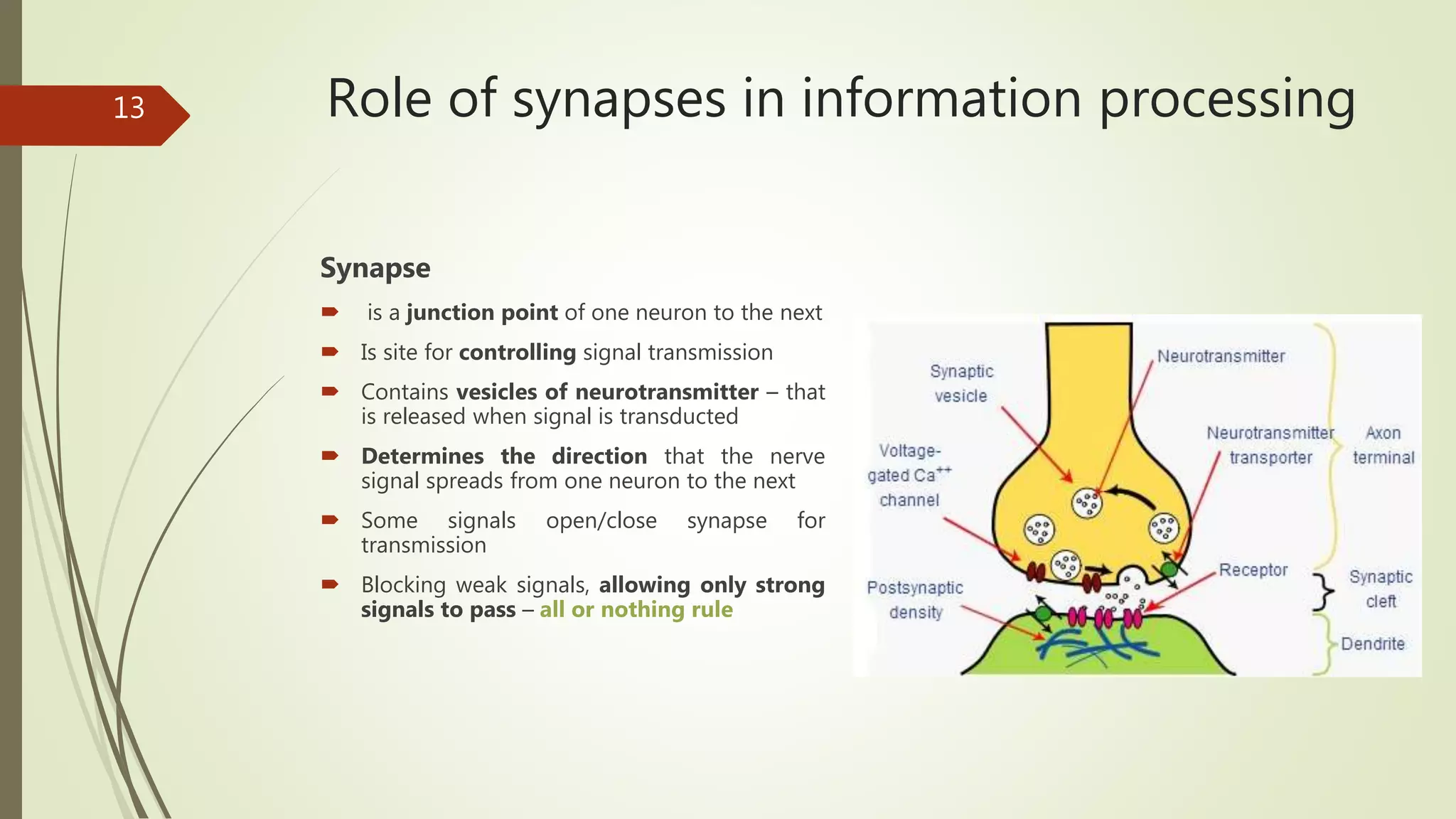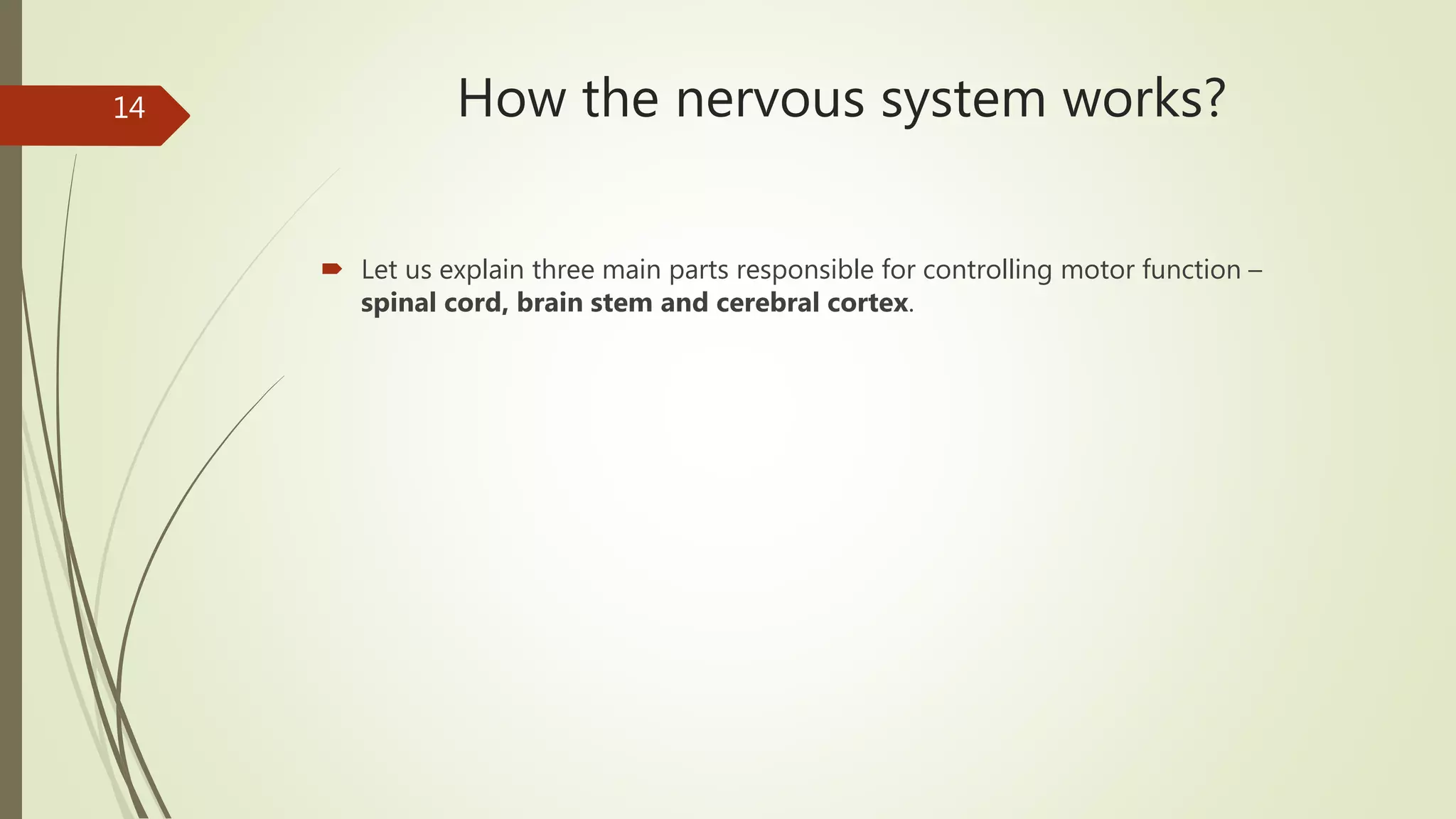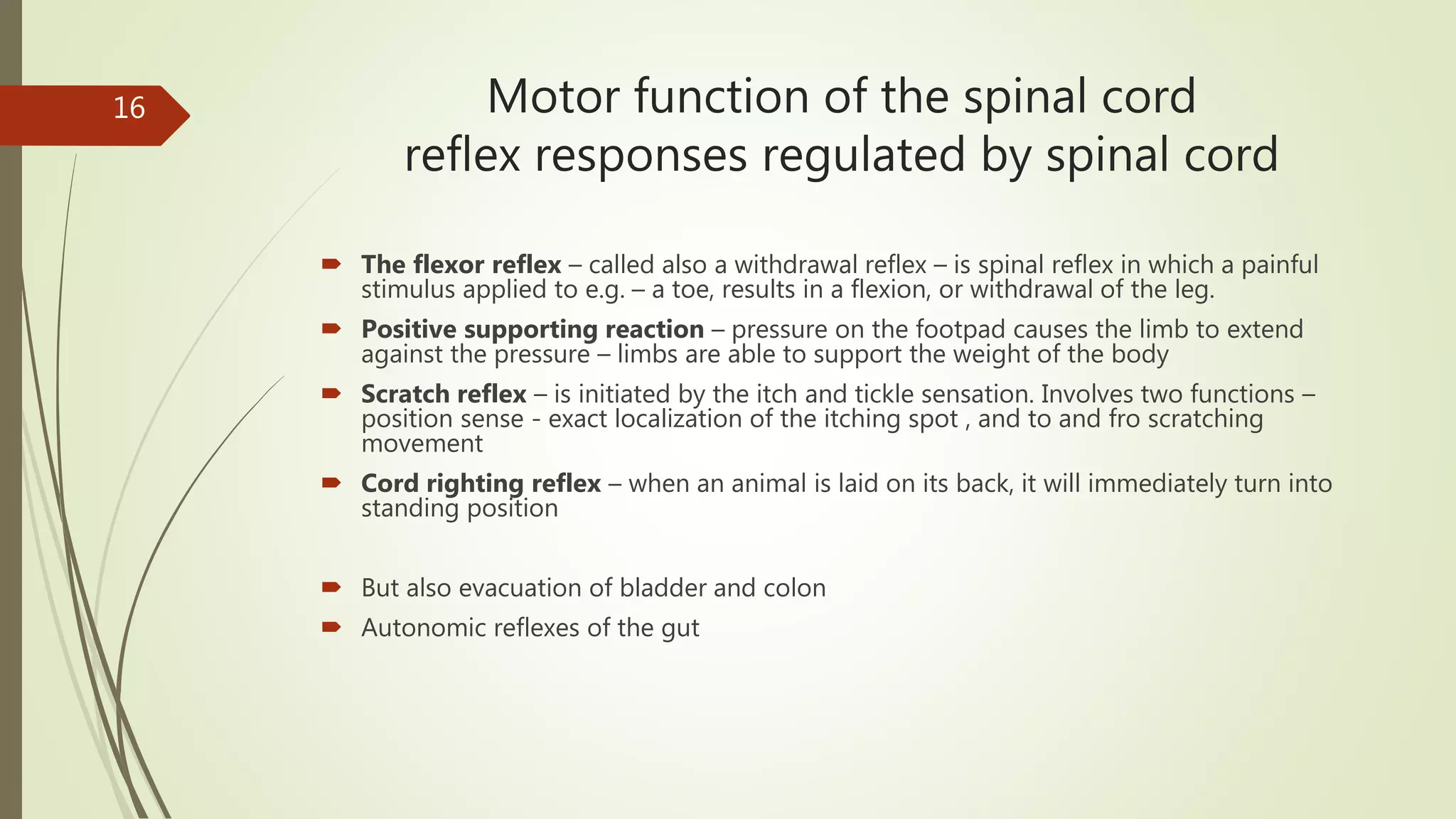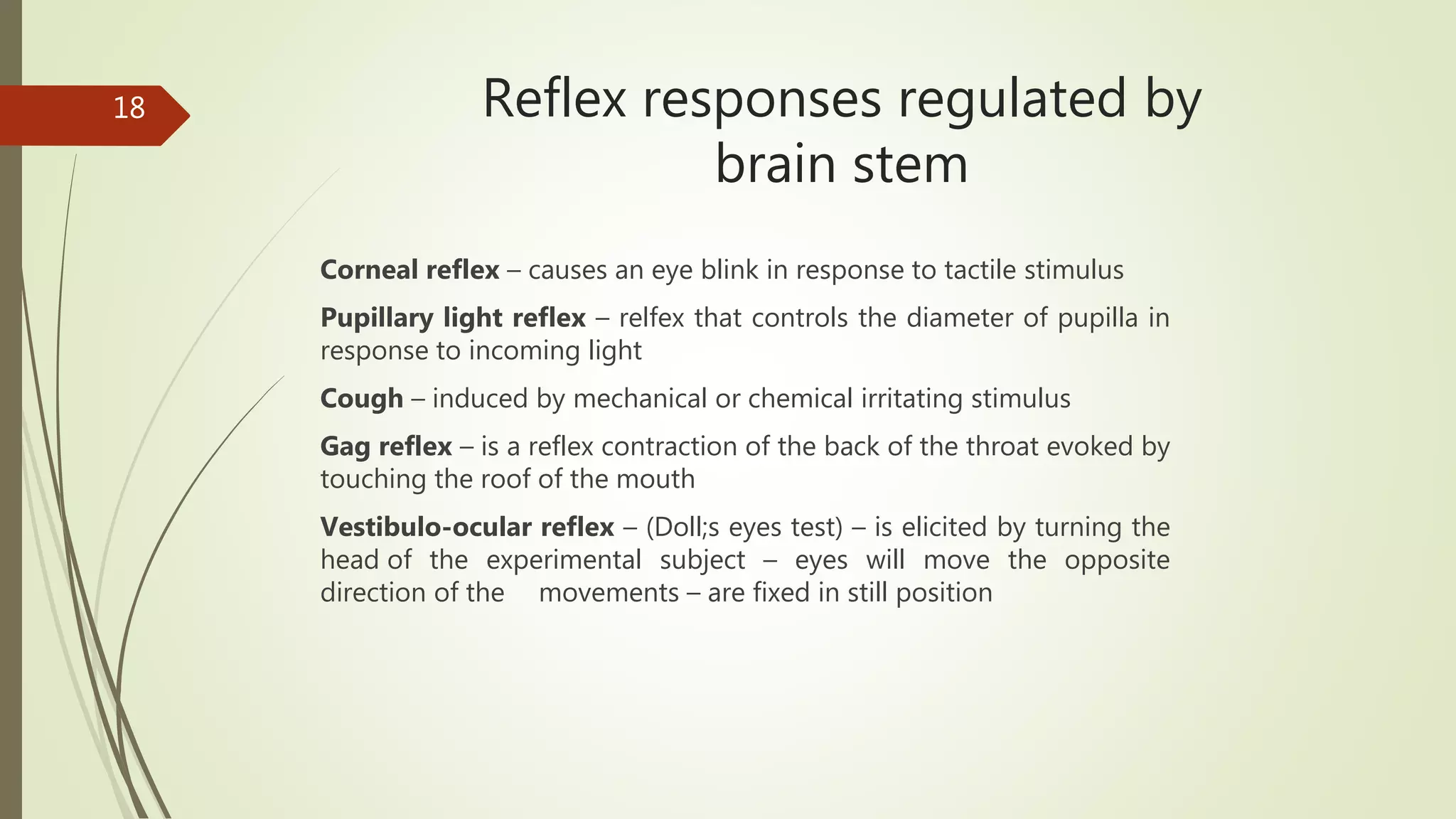The nervous system receives sensory information and coordinates motor responses. It is organized into the central nervous system (brain and spinal cord) and peripheral nervous system. The basic functional unit is the reflex arc, where sensory input leads to motor output via a feedback loop. The spinal cord mediates simple reflexes while the brain stem and cerebral cortex allow for more complex coordinated movement. The autonomic nervous system regulates involuntary functions like heart rate and digestion.
